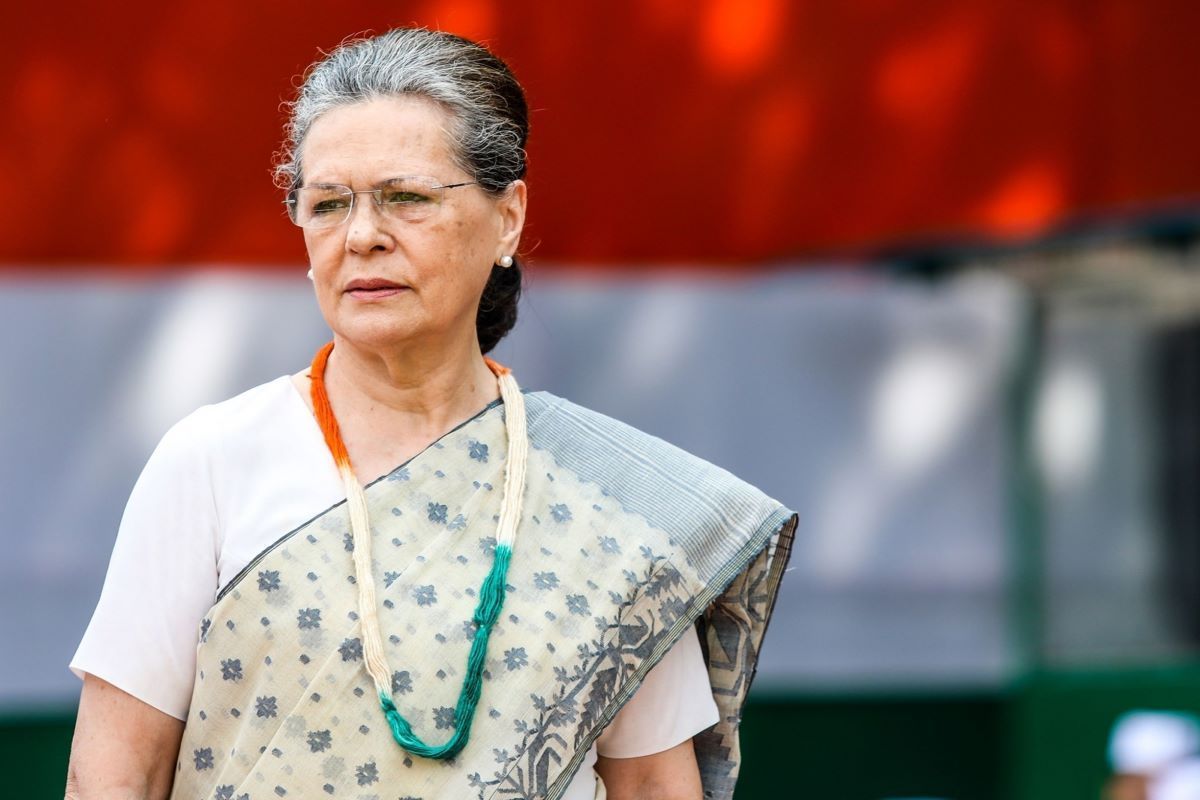The ‘livery of India’s freedom’ is under threat

- Smt. Sonia Gandhi
The Prime Minister’s renewed call for a ‘Har Ghar Tiranga’ campaign in the week leading up to our Independence Day (August 9-15) offers us an opportunity to collectively introspect on our national flag and its significance to the country. His moral duplicity in paying deference to the national flag while pledging allegiance to an organization that has remained indifferent to it is one matter. The rampant adoption of machine-manufactured polyester flags, with raw materials often imported from China and elsewhere, is another.
An attack on the khadi industry
The Flag Code of India has historically required the national flag to be made of “hand spun and hand-woven wool/cotton/silk khadi bunting”. Khadi, that coarse but versatile and sturdy fabric which the Mahatma himself spun and wove in his leadership of the national movement, is imbued with a special meaning in our historical and cultural memory. Khadi is at once a symbol of our storied past, and an icon of Indian modernity and economic vitality.
When India was under foreign rule, khadi was an instrument to locate sovereignty and self-sufficiency in the individual. In sovereign India, khadi has been a commitment to the ongoing journey of national integration and revitalization. It was in deference to this eternal symbolism that the tricolour once bore the Mahatma’s charkha as its centrepiece, and that the modern-day Indian flag used to insist on khadi as its sole fabric.
In 2022, on the auspicious occasion of the 75th anniversary of our Independence, the Government amended the code (“vide its order dated 30.12.2021”) to include “machine made…polyester ... bunting” and simultaneously exempted polyester flags from the Goods and Services Tax (GST). Thereby, it put them on the same tax footing as khadi flags. At a time when it would have been appropriate to bind ourselves afresh to the service of our country’s national symbols, the Government chose to set them aside and pursue mass-market, machine-made polyester fabric.The Karnataka Khadi Gramodyoga Samyukta Sangha (KKGSS) in Karnataka’s Hubballi district, the country’s sole national flag manufacturing unit accredited by the Bureau of Indian Standards (BIS), had to resort to an indefinite strike to call attention to the state-sponsored murder of India’s khadi industry.
This decision came at a time when India, far from its glory days as a global hub for polyester manufacturing, became a net importer of polyester yarn in 2023 and 2024. We thus have the real misfortune of importing polyester yarn, primarily from China, and then weaving this imported yarn to produce cloth for our national flag. This shameful inversion of our national pride occurred at the time of grave encroachments by the Chinese armed forces on our borders, and at the peak of the Prime Minister’s ‘Aatmanirbhar Bharat’ spectacle. The hollowness and inadequacy of the Government’s vision has had direct and calamitous consequences for the Mahatma’s foremost legatees — our khadi spinners and weavers.
The GST burden
The case of our national flag is not an exception. Rather, it is a vividly poignant illustration of this Government’s general disinterest in cultivating India’s storied handloom and handicraft traditions — khadi or otherwise. Since 2014, the Government has led a consistent effort to support big corporate interests and oligopolisation, and structurally dismantle our nation’s micro, small and medium enterprises sector, home to our handloom industries. Demonetisation, a punitive GST, and the unplanned COVID-19 lockdown saw thousands of our handloom workers quit their professions. Our handloom traditions, a material testament to our shared history as a society and polity, have been unraveled by the high-handedness of this uncaring government.
GST continues to be a burden on our handloom workers, with tax having been introduced on the final product as well as on raw materials (yarns, dyes, and chemicals). Our workers’ consistent demands to exempt handlooms from GST have fallen on unsympathetic ears, even as surging costs, particularly of electricity and cotton fibre, squeeze them out.
The recently launched Vishwakarma Yojana, itself deficient on multiple accounts, fully excludes handloom spinners and weavers from its ambit. Meanwhile, in a perversion of the Mahatma’s vision, the Government has taken no effort to empower our khadi spinners and weavers to form their own cooperatives outside of existing khadi Institutions to market and sell their products.
Khadi procurement has fallen
Government procurement of khadi has fallen as departments choose to ignore or overrule mandates that require them to do so. More worryingly, the Government has failed to build a global audience for Indian handlooms. At a time when consumers across the world are beginning to prize sustainable sourcing and fair trade, the fabric on which Gandhiji’s satyagraha was founded should have been globally treasured. Instead, even in his very own nation, Bapu’s khadi is being denied its identity. The Government has failed to regulate the market, and khadi spun from semi-mechanised charkhas is being sold indiscriminately, and under the same tag as traditional hand-spun khadi. This is to the detriment of our khadi spinners, whose wages do not exceed Rs. 200 - Rs. 250 a day despite their back-breaking manual labour.
The path forward is long, and it requires a reimagination of the place that India’s handloom traditions hold in our society and economy. But the first step is also unequivocally clear: it must begin with a restoration of khadi as the only fabric with the distinction of bearing our national flag. The fabric which Pandit Jawaharlal Nehru so evocatively described as “the livery of India’s freedom”, must find its rightful place as an embodiment of our national pride. We owe it to our history, and to our workers.
The author is a Member of Parliament (Rajya Sabha), is Chairperson of the Congress Parliamentary Party
Courtesy: The Hindu







